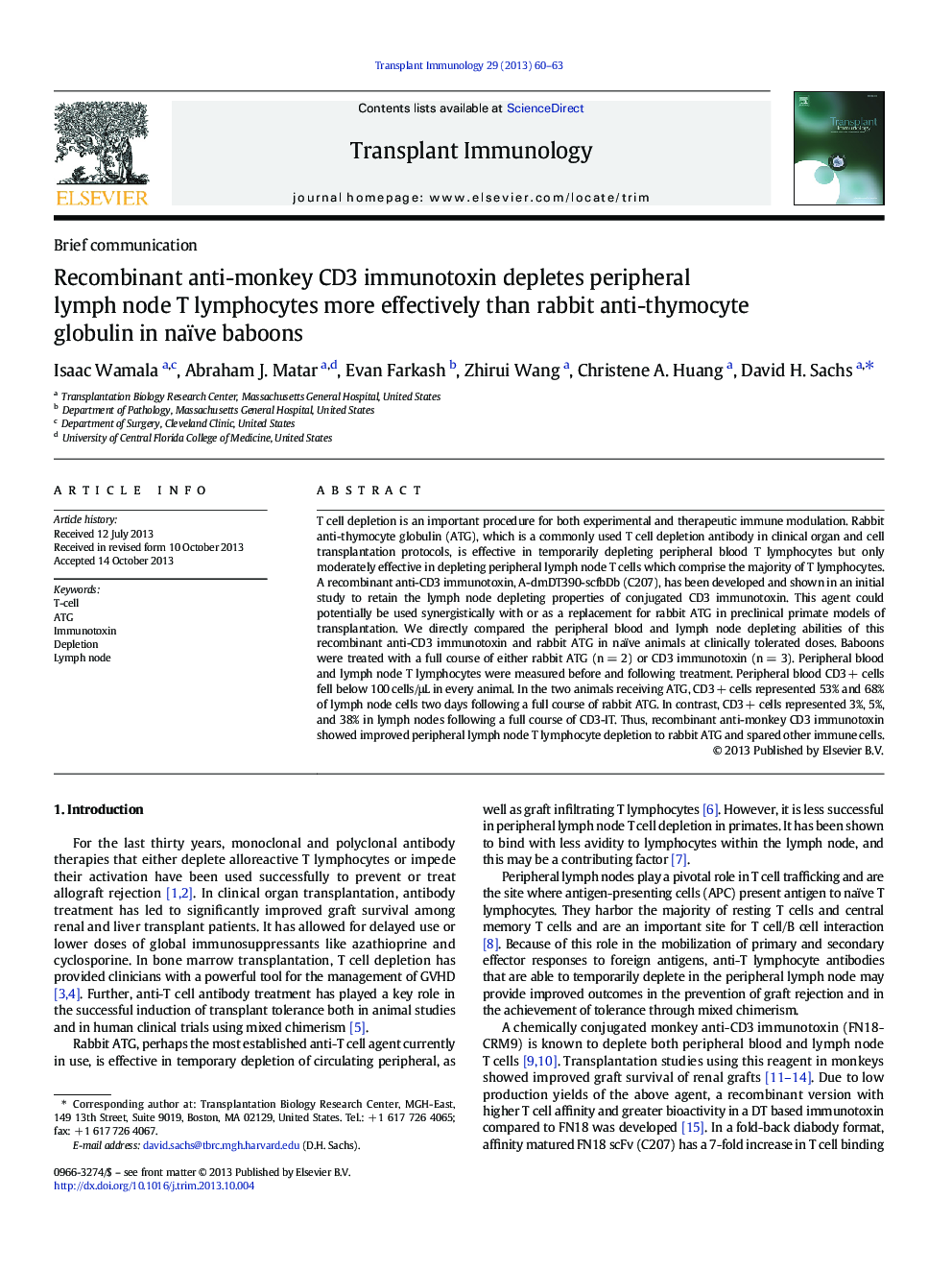| Article ID | Journal | Published Year | Pages | File Type |
|---|---|---|---|---|
| 6126029 | Transplant Immunology | 2013 | 4 Pages |
Abstract
T cell depletion is an important procedure for both experimental and therapeutic immune modulation. Rabbit anti-thymocyte globulin (ATG), which is a commonly used T cell depletion antibody in clinical organ and cell transplantation protocols, is effective in temporarily depleting peripheral blood T lymphocytes but only moderately effective in depleting peripheral lymph node T cells which comprise the majority of T lymphocytes. A recombinant anti-CD3 immunotoxin, A-dmDT390-scfbDb (C207), has been developed and shown in an initial study to retain the lymph node depleting properties of conjugated CD3 immunotoxin. This agent could potentially be used synergistically with or as a replacement for rabbit ATG in preclinical primate models of transplantation. We directly compared the peripheral blood and lymph node depleting abilities of this recombinant anti-CD3 immunotoxin and rabbit ATG in naïve animals at clinically tolerated doses. Baboons were treated with a full course of either rabbit ATG (n = 2) or CD3 immunotoxin (n = 3). Peripheral blood and lymph node T lymphocytes were measured before and following treatment. Peripheral blood CD3 + cells fell below 100 cells/μL in every animal. In the two animals receiving ATG, CD3 + cells represented 53% and 68% of lymph node cells two days following a full course of rabbit ATG. In contrast, CD3 + cells represented 3%, 5%, and 38% in lymph nodes following a full course of CD3-IT. Thus, recombinant anti-monkey CD3 immunotoxin showed improved peripheral lymph node T lymphocyte depletion to rabbit ATG and spared other immune cells.
Related Topics
Life Sciences
Immunology and Microbiology
Immunology
Authors
Isaac Wamala, Abraham J. Matar, Evan Farkash, Zhirui Wang, Christene A. Huang, David H. Sachs,
